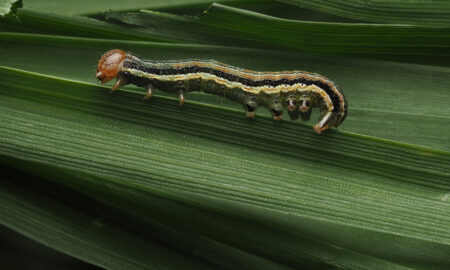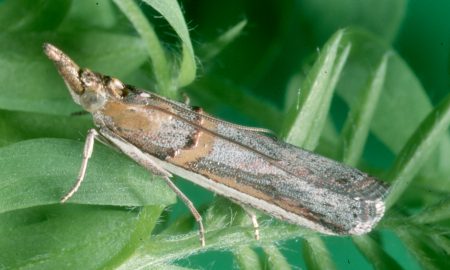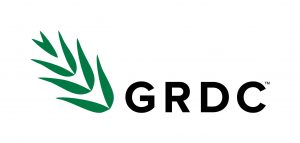Key takeaway: TIMERITE® has been updated with new data and improved modelling for better redlegged earth mite control. The changes have shifted optimal spray dates earlier in many regions boosting effectiveness by up to 30%. The tool now includes a ‘Best spray date’ and broader ‘Ideal spray window’ giving farmers greater flexibility. Cesar Australia is seeking trial sites within VIC or NSW Riverina this year to validate and test the TIMERITE® updates.
What is TIMERITE®?
During the hot, dry summer months, the redlegged earth mite (Halotydeus destructor, RLEM) survives by producing diapause eggs. These diapause eggs are extremely resilient to heat, desiccation and insecticides, allowing mite populations to persist into the next winter cropping season.
Diapause eggs can also be picked up by dust storms during summer and transported to new locations, expanding the risk for infestations when they hatch with the return of cool, wet conditions in autumn.
These eggs are produced during a specific window in late winter-spring. Targeting the mites prior to producing diapause eggs is a key strategy to reduce mite numbers in high-risk paddocks. Spraying after they’ve been produced has little impact on next season’s mite pressure.
This is where TIMERITE® comes in. TIMERITE® is a free online tool to help you pinpoint the optimal time to spray for RLEM in late winter-spring. It predicts the timing of diapause egg production, helping farmers apply control measures before this critical stage in the RLEM life cycle.
By controlling RLEM populations prior to diapause egg production, the number of mites that hatch the following autumn is drastically reduced. In turn, this protects emerging plant seedlings at a time when RLEM are most damaging.
The TIMERITE® strategy is based on the use of a long-term residual insecticide for control – for example, omethoate. Other insecticides with shorter residual activity may have reduced efficacy.
TIMERITE® just got smarter
TIMERITE® has recently been improved with enhanced modelling that incorporates climate variability and climate change.
The original model relied on daylength and long-term seasonal patterns, and didn’t account for the influence of changing climatic conditions, so spray dates remained the same each year for a given location.
With the updated model, recommended spray dates have shifted. For many parts of southern Australia, effective spraying dates are now earlier in the season (on average 27 days). This is expected to boost the effectiveness of RLEM control by up to 30 per cent!
To support more flexible on-farm decision-making, the updated TIMERITE® tool now provides both a ‘Best spray date’, which pinpoints the optimal timing for control, and a broader ‘Ideal spray window’, in which control of RLEM will remain at least 95% as effective as the optimum. This allows greater flexibility to coincide with suitable weather conditions and/or to integrate RLEM management with other farm operations, such as disease or weed control, allowing more efficient overall farm management.
A new look for TIMERITE®
The TIMERITE® website has been refreshed with a more accessible and user-friendly interface.
Just enter your postcode to receive your region’s best spray date.
Plus, the tool also shows how mite control may be affected if spraying takes place outside the ideal spray window.
WANTED: Two trial sites for testing TIMERITE®
Researchers at Cesar Australia want your help to test the updated TIMERITE® tool.
What we’re looking for:
- Paddocks with significant RLEM numbers
- Growers with the capacity to be able to spray at different TIMERITE® recommended dates (the area does not need to be fenced off, and normal grazing practices can continue)
- Target regions include Central, Northeast, or Northwest Victoria, or NSW Riverina
If you are outside these areas, we still want to hear from you, as trials will expand to other regions in 2026.
By getting involved, you’ll contribute to refining TIMERITE® and gain early insights into the updated model. Cesar Australia can also host demonstrations at trial sites – bringing together local growers and advisors to explore the trial results, share practical tips, and discuss best practice RLEM management strategies.
So, if you’re a grower, advisor, grower group or agribusiness interested in learning about improving your approach to RLEM management these trials are a great place to start.
Want to get involved? Please get in touch:
Aston Arthur, Cesar Australia
aarthur@cesaraustralia.com
0427 875 040
Acknowledgements
Updates and improvements to TIMERITE® were undertaken by Cesar Australia in collaboration with CSIRO, AWI, GRDC and Meat & Livestock Australia.
Learn more
Redlegged Earth Mite Best Management Practice Guide
Cover image: Photo by Andrew Weeks, Cesar Australia





